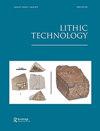Using Fire for Woodworking: An Experimental Exploration of Use-Wear on Lithic Tools
IF 1.2
3区 社会学
Q2 ANTHROPOLOGY
引用次数: 1
Abstract
ABSTRACT Throughout prehistoric times, woodworking was an essential activity. We know this because of the existence of preserved wooden objects, as well as the use-wear traces recorded on lithic tools. In general terms, functional studies and experimental programs have aimed to analyze and understand the use-wear traces generated by green and dry wood. However, some of the wood remains preserved across time show signs of thermal alteration caused by fire. For this reason, we have carried out an experimental program in which green, dry and thermoaltered wood have been worked in order to study the traces generated on the lithic tools. The results show significant differences between the use-wear traces generated by green and dry woods, and thermally altered wood. This indicates that it would be possible to recognize signs of work with thermoaltered wood on archaeological lithic tools and, therefore, to better understand the working processes of past populations.用火做木工:对石器工具使用磨损的实验探索
在整个史前时代,木工都是一项必不可少的活动。我们之所以知道这一点,是因为保存完好的木制物品的存在,以及石器工具上记录的使用磨损痕迹。一般来说,功能研究和实验项目旨在分析和理解绿色和干燥木材产生的使用磨损痕迹。然而,随着时间的推移,一些保存下来的木材显示出由火灾引起的热变化的迹象。出于这个原因,我们进行了一个实验项目,在这个项目中,绿色、干燥和热变的木材被加工,以研究石器工具上产生的痕迹。结果表明,绿色木材和干燥木材产生的使用磨损痕迹与热蚀木材产生的使用磨损痕迹存在显著差异。这表明,有可能在考古石器工具上识别出热变木材的工作迹象,从而更好地了解过去人口的工作过程。
本文章由计算机程序翻译,如有差异,请以英文原文为准。
求助全文
约1分钟内获得全文
求助全文

 求助内容:
求助内容: 应助结果提醒方式:
应助结果提醒方式:


